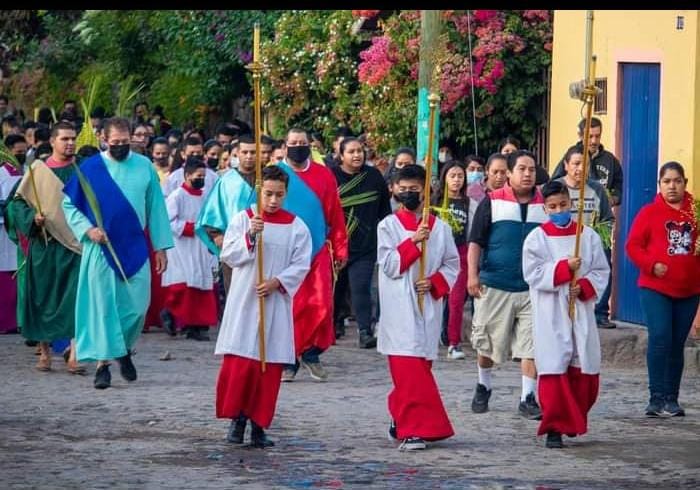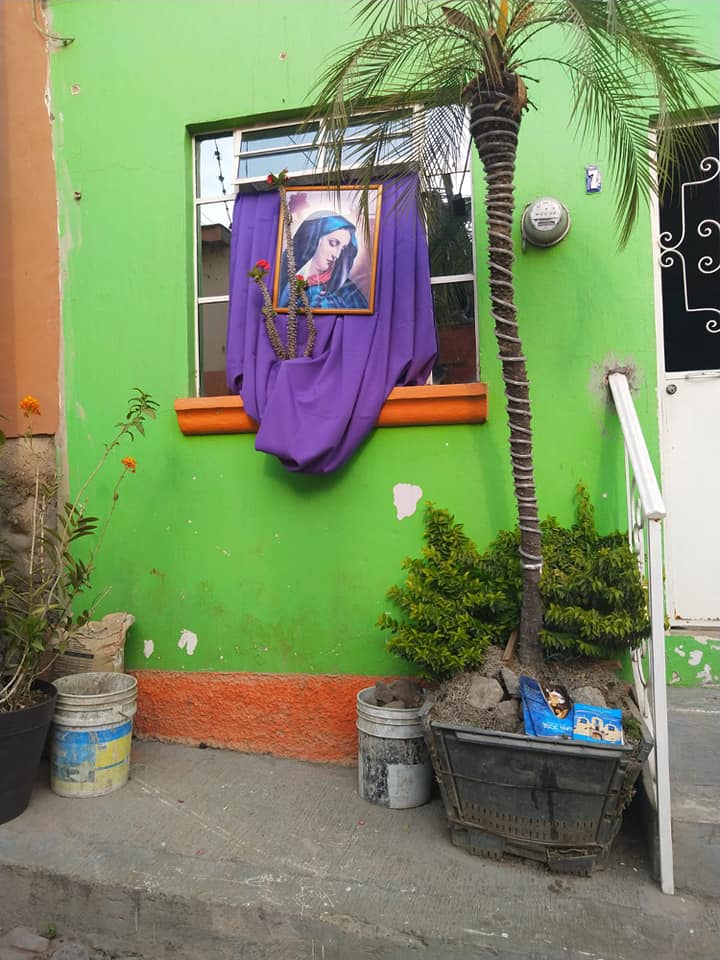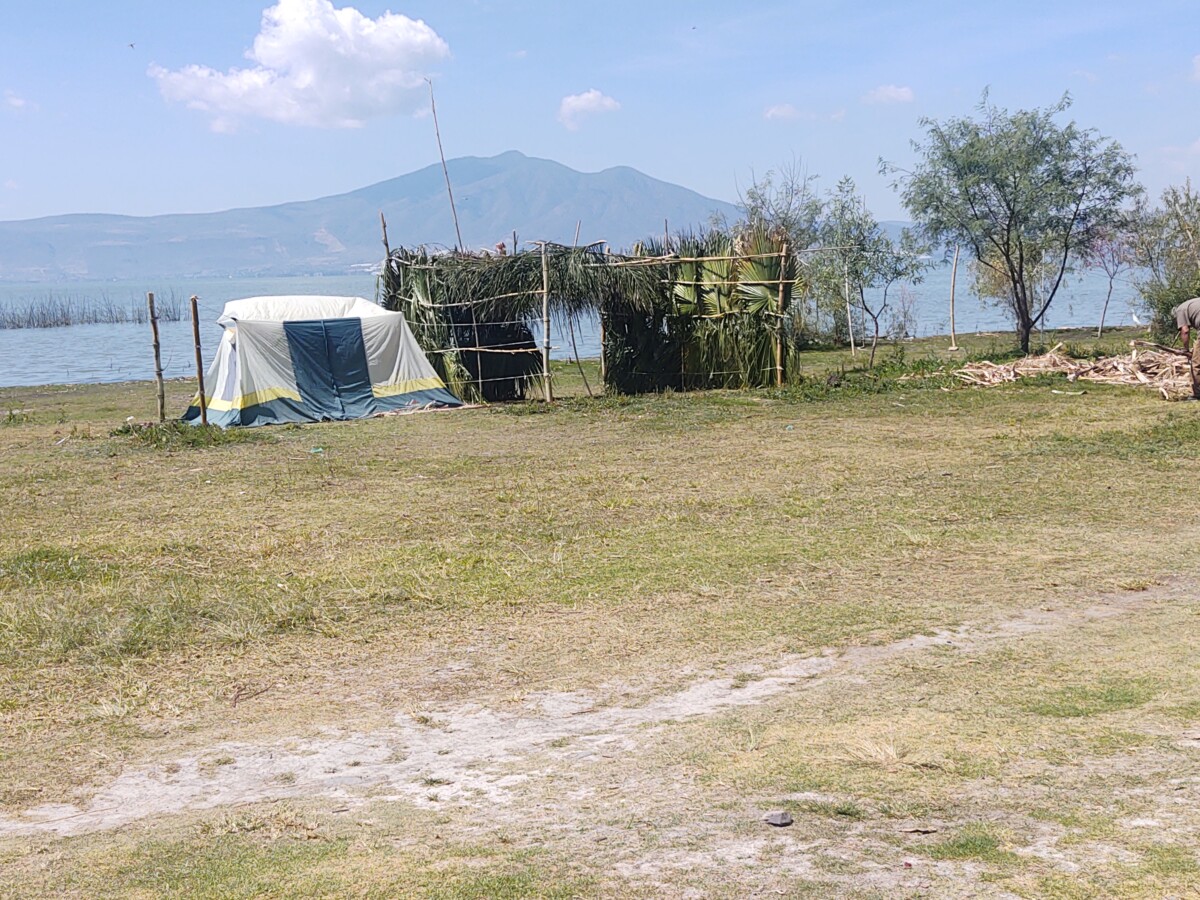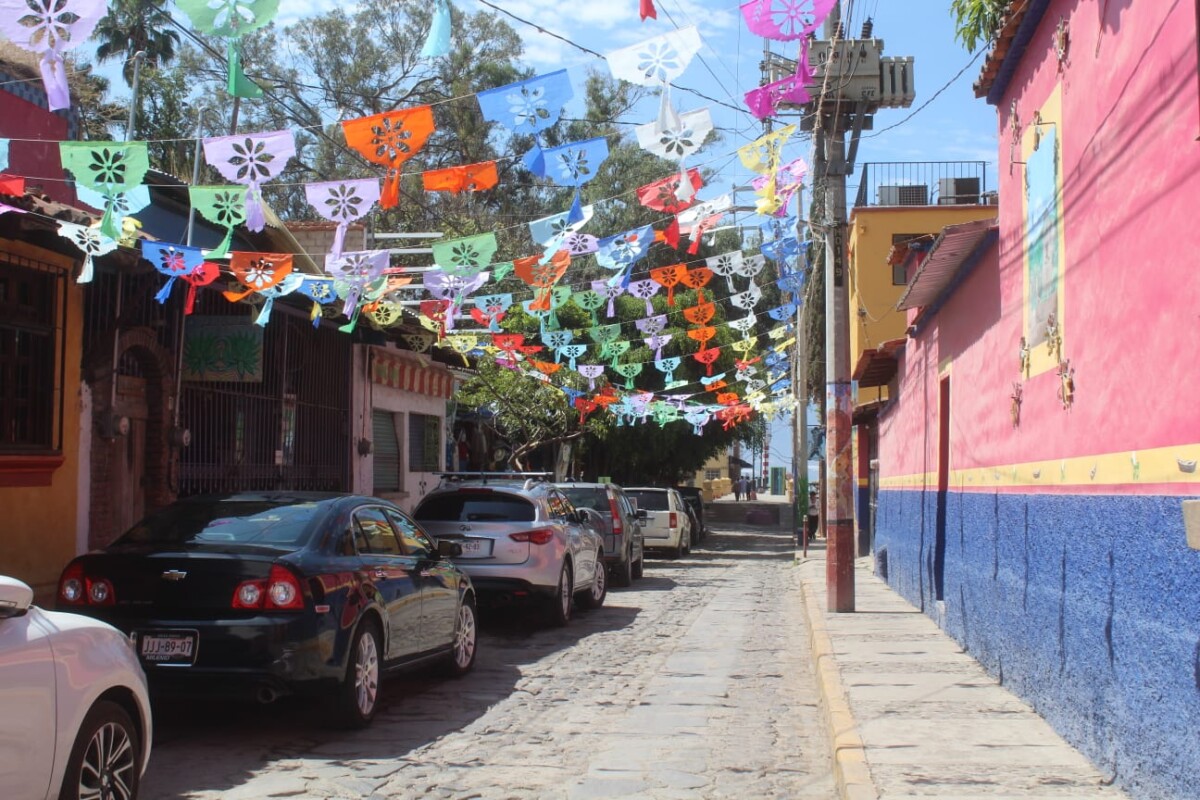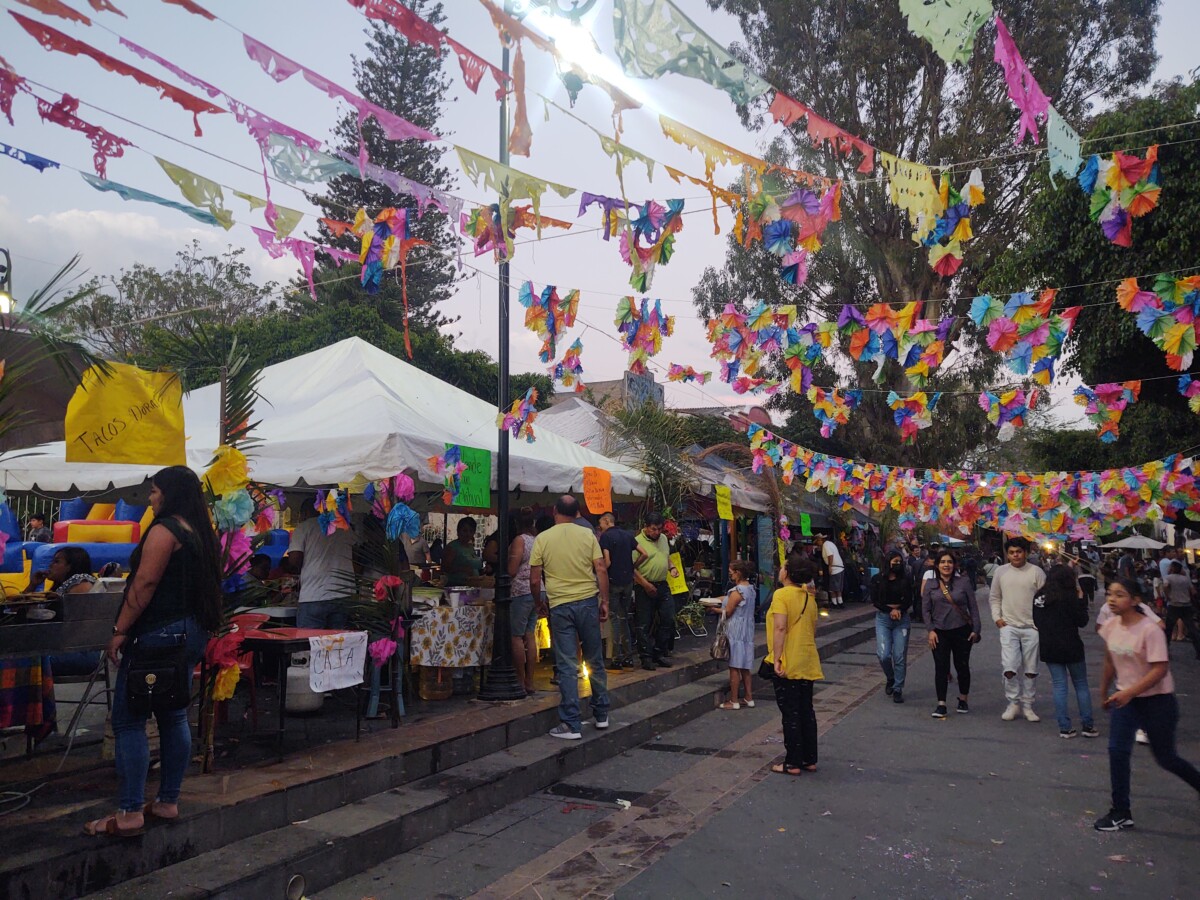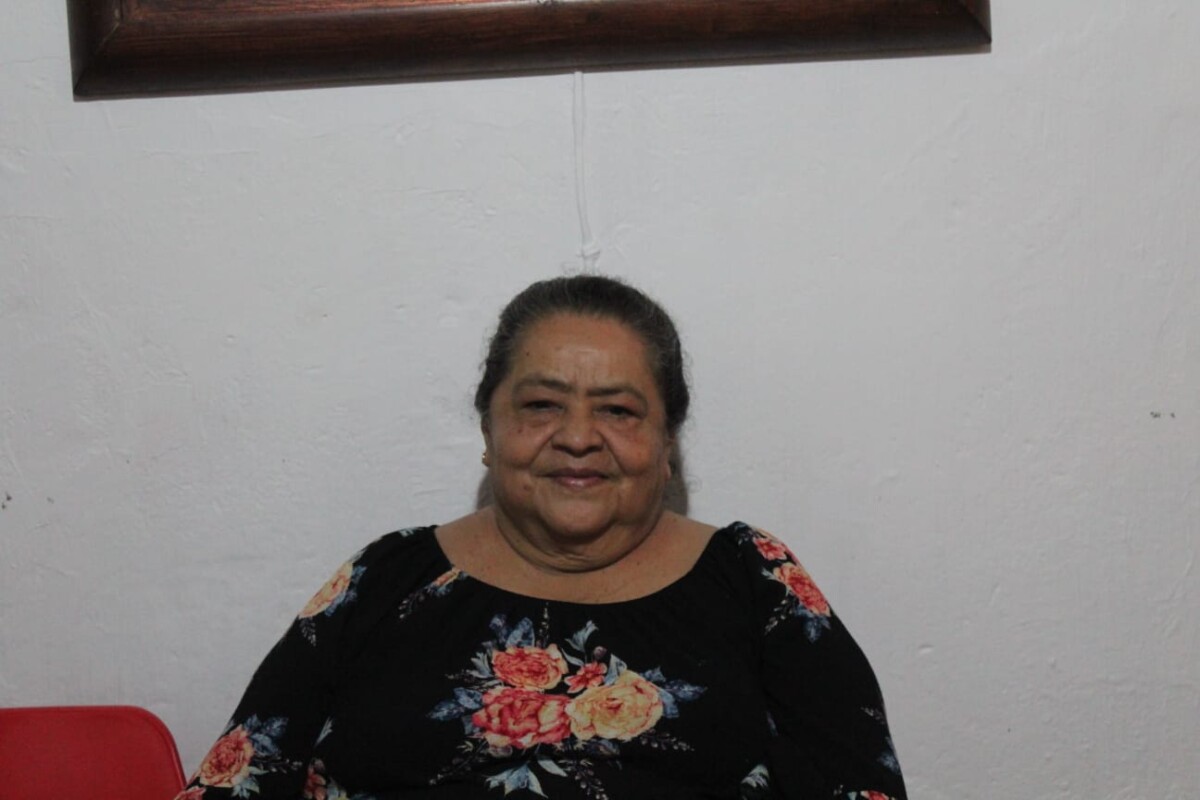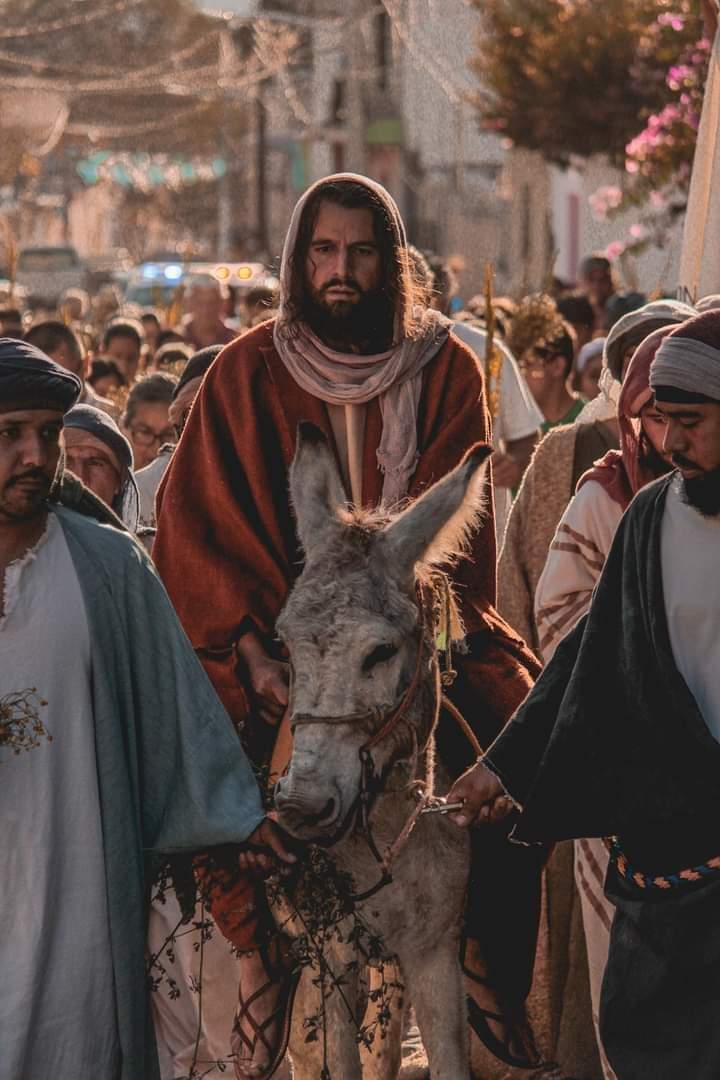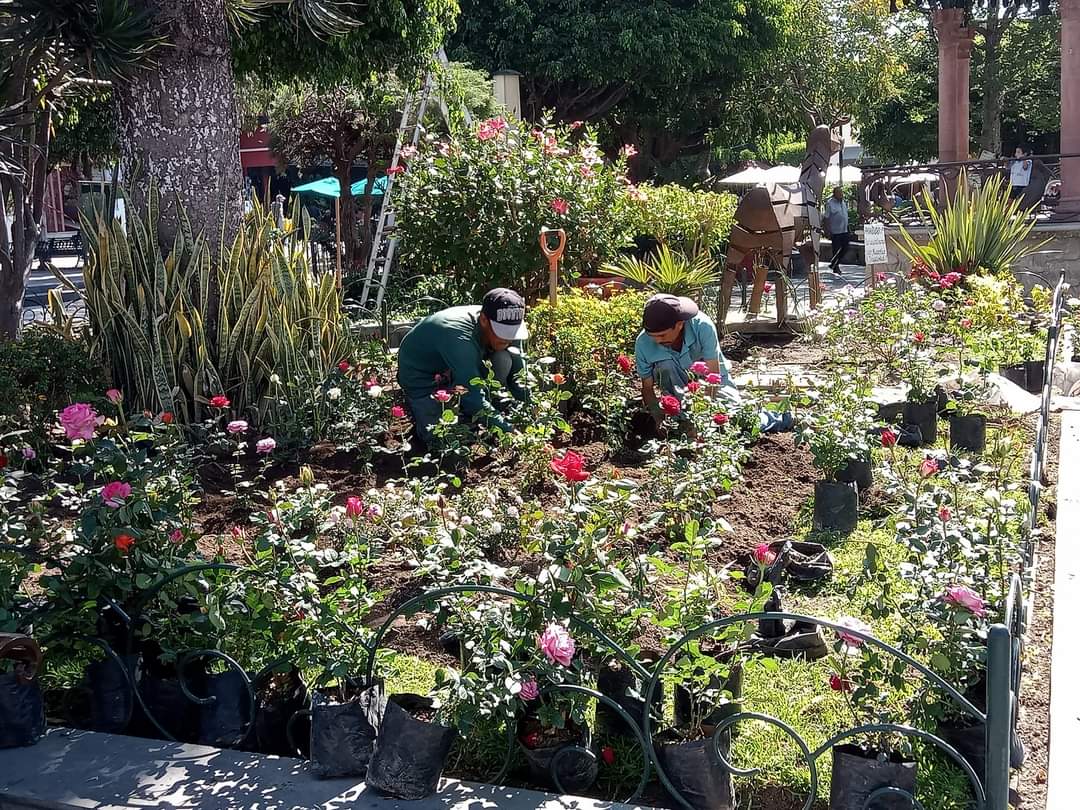tradiciones
Holy Week begins with attendance of the faithful in San Juan Cosalá
The commemoration of Palm Sunday began with the traditional route from the Malecon (boardwalk) to the church of San Juan Cosalá. Photo: Alma Serrano.
Alma Serrano(San Juan Cosalá).- Catholics packed the atrium of the San Juan Bautista church in San Juan Cosalá to commemorate Palm Sunday at the beginning of Holy Week. The celebration began shortly before 8:00 a.m., when the faithful gathered on Del Cardenal Sur Street, next to where the Malecon (boardwalk) begins, to bless the palms.
Afterward, the procession began the journey to the church, emulating the triumphal entry of Jesus Christ into the city of Jerusalem and his confirmation as the son of God. Palm branches, prayers, faith, and emotion were the essence of the celebration in the community.
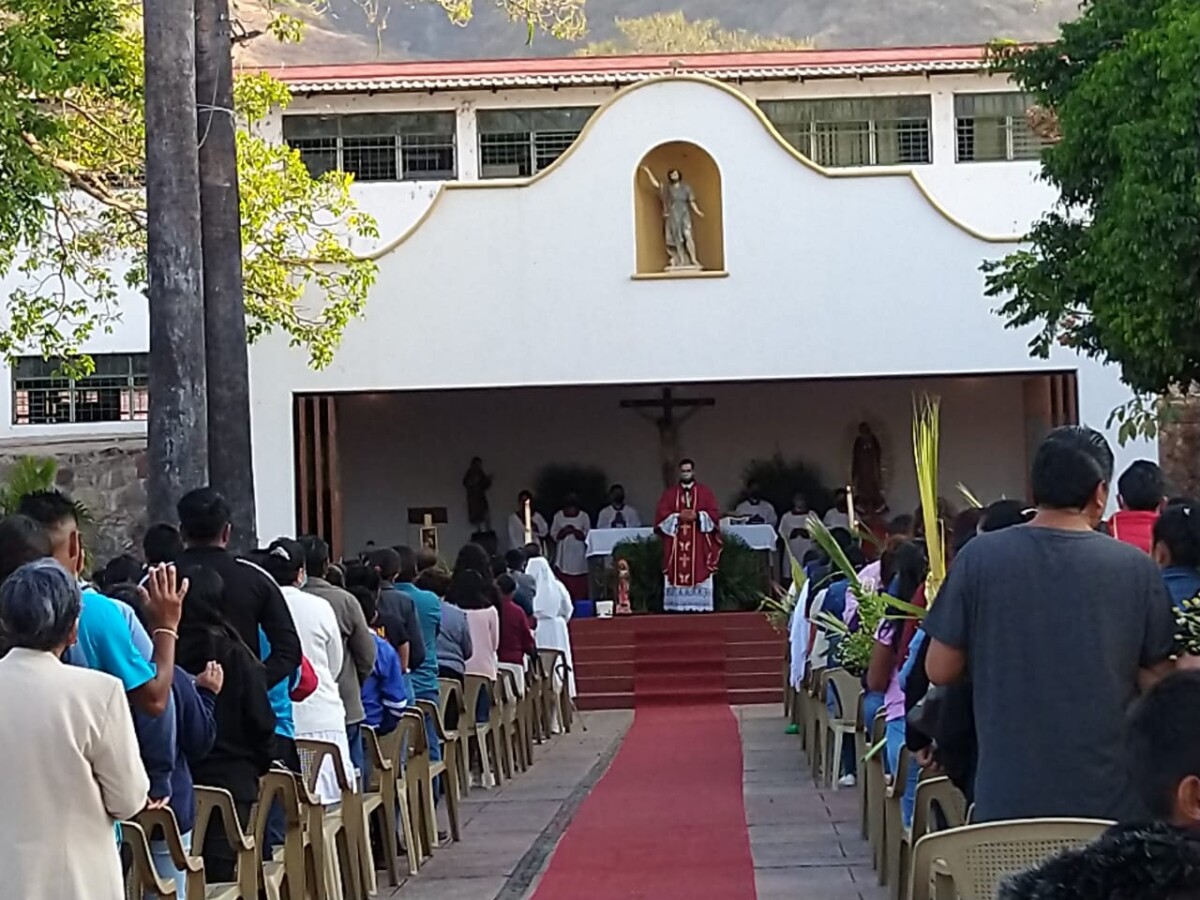
Approximately 400 people crowded the atrium of the Parish of San Juan Bautista. Photo: Alma Serrano.
This sacred act brought together around 400 people, who joined together to bid farewell to Lent and begin Holy Week, which lasts until Sunday, April 17, a time dedicated to remembering the passion, death, and resurrection of Jesus.
«These are not holidays, they are holy days, we need to meet again with the one who lost his dignity and take up our lives in the best way, let’s do the best with our lives because we only have one here on earth», said during the sermon the priest Ramón Ramírez López.
Also present at the ceremony, on both sides of the altar, were representatives of the 12 apostles. During the Eucharist, more than 70 people received communion, including children, young people, adults, and senior citizens, most of whom took appropriate sanitation measures.
Translated by Nita Rudy
PHOTONOTE:
Alma Serrano(San Juan Cosalá).- The tradition of the Altars of Sorrows is still present in San Juan Cosalá. Last Friday, April 8, some altars dedicated to the Virgin of Sorrows, also known as «Incendios de Dolores», were placed on Iturbide Street, as a symbol of the suffering of the Virgin Mary for her son Jesus.
Easter camping in Ajijic will have rules and timetable
On the beach at the end of Francisco Villa Street, some tarps can already be seen. Photo: Sofía Medeles.
Sofía Medeles . – This year, the residents of Francisco Villa Street have the permission of the delegation to carry out their traditional camping on the shore of the lake during Easter Week, from Thursday, April 14 to Sunday, April 17.
Acting Ajijic delegate Maximiano Macías Arceo said campers came to ask for permission, which was granted, although with some restrictions. For example, tents and tarps can be put up at the end of Francisco Villa Street and the beach of La Crucita.
In addition, the hours for listening to music will be limited. Although he did not mention an exact time, he said he does not want any problems with the neighbors who live near those beaches.
“It is not just for campers, but also any private home or business where they are exceeding the limit of both sound and hours,” Macías Arceo said. “If they do exceed the limits, public security will visit them to maintain order.”
Another topic he mentioned was the garbage generated. He asked for the cooperation of campers to keep the beaches as clean as possible. He said campers must remove their tents or palm leaf huts when their visit is over.
“On Easter Monday, April 18, they should no longer be there,” Macías Arceo said. “We trust they will be responsible and follow the restrictions.»
The tradition of camping on the shores of the lake during Holy Week began in 1992. Families go to the beach, set up their tents and stay on Holy Days – Thursday, Friday, Saturday and Sunday – to spend time with their neighbors.
Translated by Mike Rogers
Downtown Ajijic welcomes holiday tourists with colorful papel picado overhead decorations
Papel picado with figures, chains and papel picado in strips can be seen in Colón street. Photo: Sofía Medeles.
Sofía Medeles.- To welcome visitors during Holy Week, personnel from the Ajijic delegation placed sheets of papel picado in different shapes and colors along Colón Street and on the kiosk in the main square, as well as on the streets for the Passion of Christ.
Since the beginning of last week, on Colón Street, different types of papel picado have been hung from roof edge to roof edge, along the stretch from Hidalgo Street, by the main square, to the boardwalk.
Acting Ajijic delegate Maximiano Macias Arceo commented that this initiative was applauded by people who have businesses on the road, but that it will only last for Holy Week, since they will be removed the following week, with the exception of the papel picado decorations in the plaza.
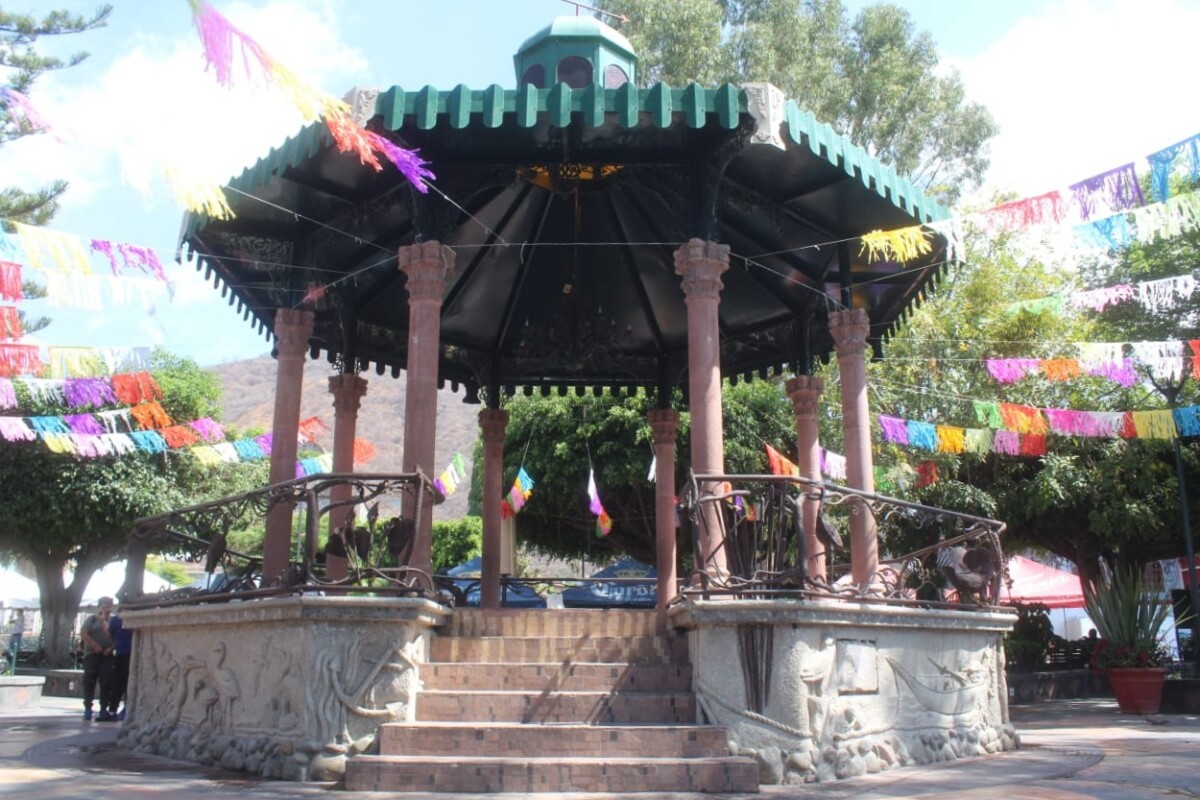
Although the kiosk already has papel picado or cutout paper, it will be replaced in the next few days for the festivities. Photo: Sofía Medeles
«We were told that it is a bad idea to put paper and that it would be better to use plastic composure, because of its durability, but we wanted to follow traditions, and the tradition of Ajijic is to use paper. It will only last this week, but the one that will be placed in the plaza, if we want to leave it for a long time, and change it to be in accordance with the upcoming festivities,» he shared.
In addition, Macías Arceo said that the pedestrian walkway will be maintained from Thursday to Sunday and the beach in front of the Old Posada will be used as a parking lot with a capacity of up to 150 cars.
Translated by Kerry Watson
Verbena Jamaica del Pasado benefits 20 sick Ajijic residents
The stalls, decorated with palm leaves, were placed on the main square. Photo: Sofía Medeles.
Sofía Medeles (Ajijic).- The purpose of this year’s Verbena Jamaica del Pasado was to support Manos Solidarias, a group that helps sick people in Ajijic. A total of 20 families of sick people benefited from the kermesse (community fundraiser) held on April 10.
Verbena Jamaica del Pasado is a local event that goes back more than 120 years, where typical Mexican games are played, traditional food is shared or sold,such as tacos, sopes, enchiladas, pozole, tamales,, all prepared by Mexican families who have done so for many generations.
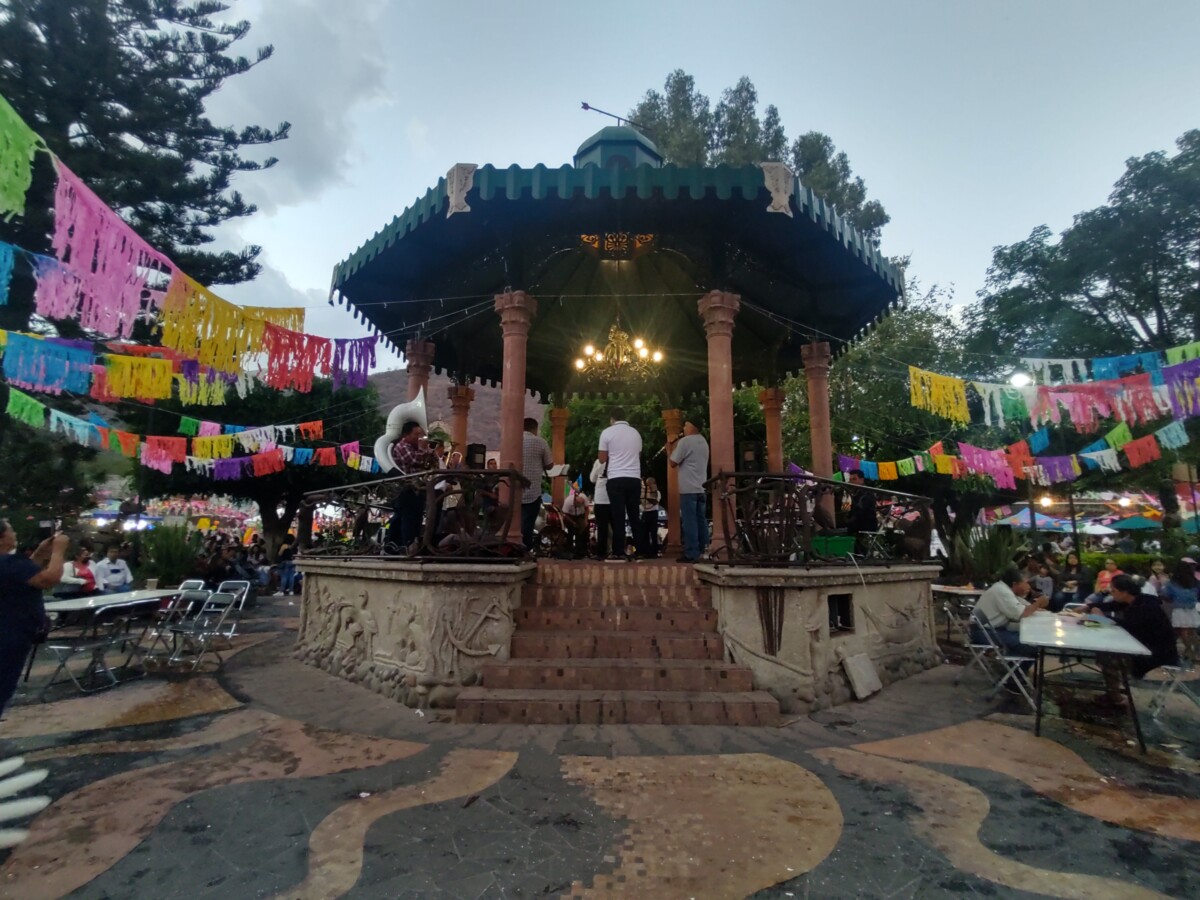
The kiosk was also decorated with papel picado. Photo: Sofía Medeles.
Although the group Pasión de Cristo, which is in charge of the organization of the popular festival, participated with two food and drink stalls, most of the stalls were from relatives of people with illnesses that require high-cost treatments and other medical expenses.
In this edition the verbena extended much longer than usual, having food, drinks, desserts, confetti eggs, and lottery from 8:00 in the morning until 10:00 at night. In some of the stands they had to look for alternative food to sell to cover the longer schedule. The people who sold menudo, for example, at the end, sold roasted meat.
The papaqui, a traditional game that consists of throwing confetti eggs among the attendees, could not be performed, since the musical group did not know the song that is played during this game. Another tradition, the «light of the past,» in which the electric lights are turned off and candles are burned in lamps made of crepe paper to resemble stained glass, was also omitted since the short drizzle that occurred wet the lamps enough to make them unusable.
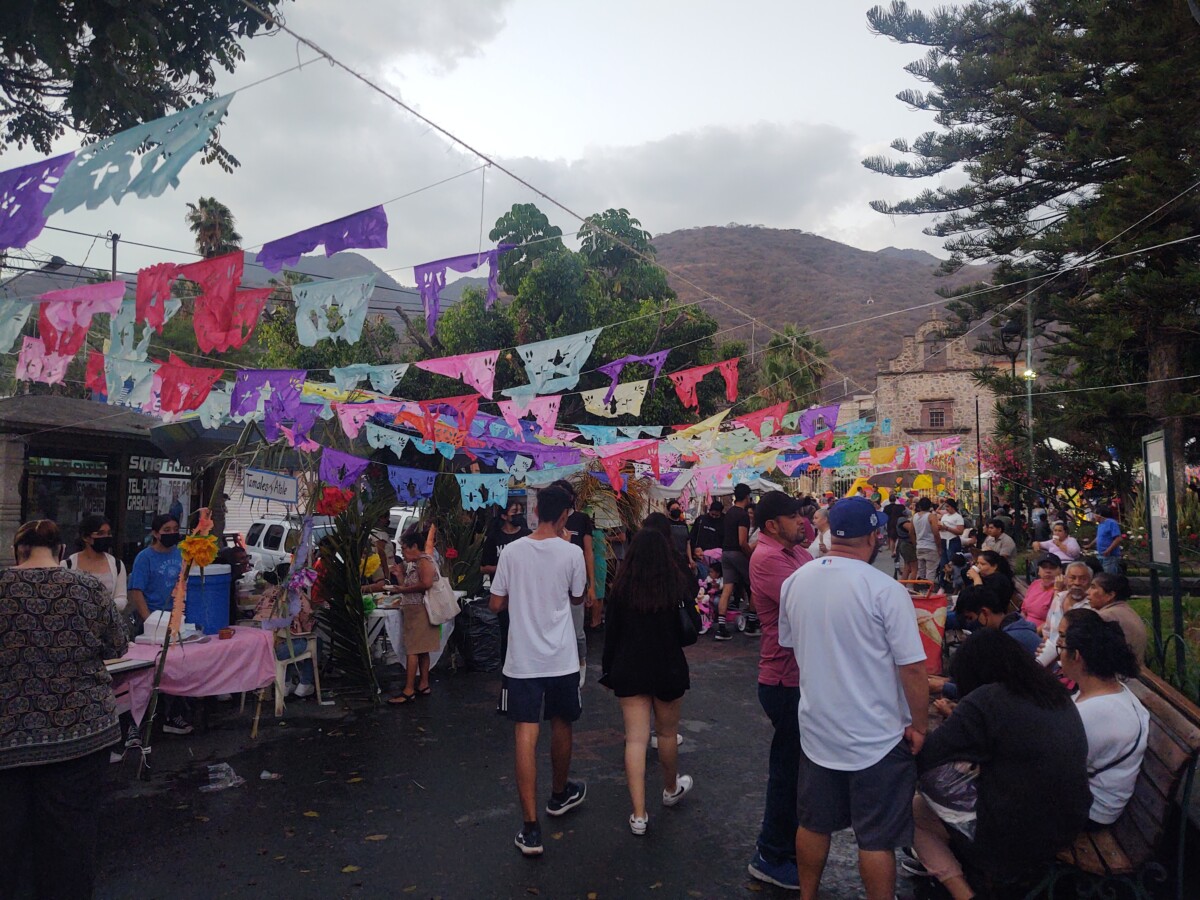
In spite of the rain, many people remained in the plaza, enjoying the music and the food booths. Photo: Sofía Medeles.
One of the members of Manos Solidarias commented that a donation box was also placed in the main square, in which a little more than four thousand pesos were collected and which was originally going to be distributed among the 20 families that participated. However, both the participants and the group opted to give that money to sick people who could not participate: Sara Enciso, Carlos Pérez Gudiño, Niño Santacruz and Jorge Vega.
Finally, Manos Solidarias stated that they hope to organize another event soon in order to continue supporting the sick and, for his part, Eduardo Ramos Cordero, general director of Pasión de Cristo, supported the idea.
Both groups thanked the contribution of the inhabitants of Ajijic, the tourists who joined in and the visitors from other towns for supporting the cause.
Translated by Sandy Britton
Restaurant Cenaduría Memo: 52 years sharing Mexican flavors
María Hilda Robledo Vázquez, opened «Memo» Cenaduría when she was only 20 years old. Photo: Sofía Medeles.
Sofía Medeles(Ajijic).- «Memo’s» is one of the most long-lived and emblematic local businesses in Ajijic. At 72 years old, its founder, Mrs. María Hilda Robledo Vázquez, shared the trajectory of her 52-year business.
María Robledo, better known as Mari, opened the diner when she was only 20 years old. She says that she wanted to start a business, so she started with tacos, then added menudo, until she got to what she currently sells, which is a variety of typical Mexican food dishes.
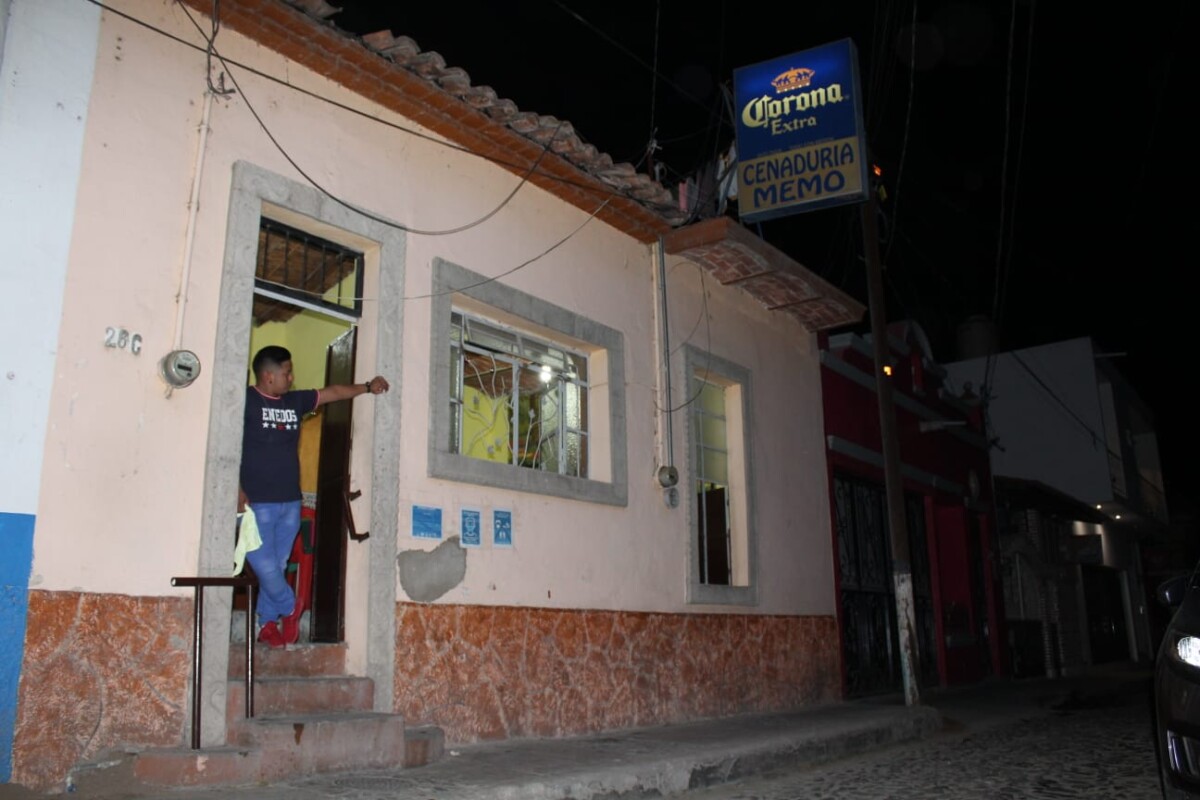
The establishment is located at 25 Hidalgo Street. At the door, Mrs. Mari’s grandson, Alejandro. Photo: Sofía Medeles.
«Before being located where the business is today, we moved from two other places. Before, we were known as «Los Deportes» because we were in a place that was a sports store. Later, my stepfather made a contract with a brewery to put up the billboard, and since his name was Memo, they put it in his name. They said they were going to change it, but in the end they didn’t, and that’s how it stayed’ that’s how we became known,» the Mari related.
Mari Robledo also said that she began to be recognized by the people of Guadalajara when she was visited by some godparents of one of her brothers about six years after starting her business. They told her that they would recommend her to people from Guadalajara, and people from Guadalajara have been coming to visit her ever since.
«Sometimes customers come and tell me, I remember when my parents used to bring me here, and you are still running the business after all this time,» added the founder of the restaurant.
«Memo» has approximately 30 years on Hidalgo Street #25, in the center of the town, where there have been hundreds of tourists both local and national, and even international.
Mari shared that she has learned that her clientele comes through word of mouth, and they always let her know that they were satisfied with her dishes, especially with the pozole, one of her best-selling preparations.
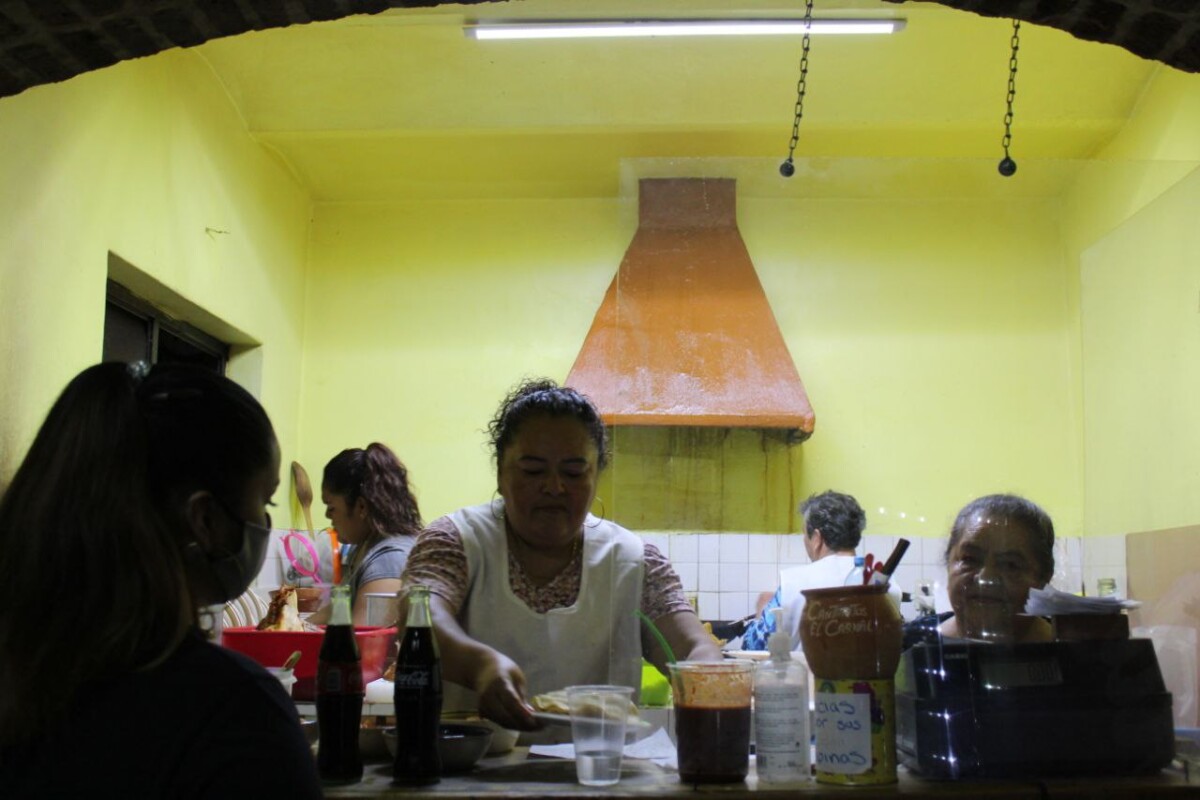
Doña Mari with her workers in the kitchen of the «Memo» diner. Photo: Sofía Medeles.
Since its founding, the business has remained very family-run. At the beginning, Mari worked with her sisters. Later on she worked with her children, Fernando, Laura, Virginia and Alejandrina, who supported her at some point. The last one helps her still.
In addition, her son-in-law Francisco Romero and her grandchildren Izbia, Alejandro, Romina and Fernanda have joined the team; besides, María Elena Martínez, Corazón de Jesús Cerna and Guadalupe Pulido, are her employees who help her in the kitchen.
Although she finds the cooking business exhausting, María Robledo Vázquez hopes that the restaurant will continue for many years to come.
«The business has always been a support to help my children get ahead and give them an education. My daughter Alejandrina already knows how to do things here, and she told me that she would like to continue. I hope she does.»
Finally, Mari thanked all her customers because they have always been unconditional and come back to the restaurant with pleasure.
Translated by Sydney Metrick
Jocotepec restaurants expect profitable tourism in Easter Week
The approximately 14 restaurants that make up the area known as Piedra Barrenada expect a large influx of tourists during Easter Week. Photo: Héctor Ruiz.
Héctor Ruiz Mejía (Jocotepec).- Jocotepec expects a major influx of tourists during Easter Week, with a concomitant increase in economic revenue. The 14 restaurants of the tourist – gastronomic zone of San Juan Cosalá known as Piedra Barrenada, located in San Juan Cosalá, are preparing for a return to “normal” after a drop of approximately 75 percent in sales during last year’s holiday season.
According to Víctor Manuel Loza Ornelas, director of Tourism and Artisan Promotion, after two years of a complicated panorama in the sector due to the pandemic, this year more than 18,000 visitors are expected during Easter Week. Loza Ornelas stated that the economic revenue expected is approximately 4 million pesos per week (about US$200,000), or 8,000,000 pesos in total during the vacation season (about US$400,000). This is double the 2,000,000 pesos that are normally generated per week. «The economic revenue in a bad season, let’s say, goes above two million pesos, but in this season that amount doubles», he said.
Saulo Rameño Castañeda, manager of the 42-year-old Bar Piedra Barrenada Restaurant, is also optimistic. «The truth is that the last two years were very complicated. Although we were open last year, we did not take in what we expected. I estimate that there was a 50 percent decrease in sales. However, the outlook for this year is favorable,» he said. The businessman added that during the Holy Days this year, they will open longer hours, from 8 am. to 8 pm. In this busiest time of the year, they host up to 600 diners per day.
The year that had the greatest impact on the drop in sales was 2020, when health authorities forced businesses to close their doors for a month due to the sanitary contingency.
Translated by Elisabeth Shields
Holy Week celebrations to be held in the church; Palm Sunday procession to end in the plaza
The Palm Sunday route in 2019 went through village streets. Photo: La Tradición de Ajijic.
Sofía Medeles(Ajijic).- There will be changes to this year’s Holy Week celebrations, including the living representations of the Passion of Christ prior to the Viacrucis, or Way of the Cross.
Jesus will ride a donkey on Palm Sunday as usual, beginning at 6 p.m. at Six Corners. But the route will end in Ajijic’s main square rather than at the parish of San Andrés Apóstol as in the past. The blessing of palms will take place at all Sunday Mass times.
Celebrations of Maundy Thursday (commemoration of the Last Supper) and Good Friday will be at 7 p.m. on April 14 and 15. A Holy Saturday service will be at 8 p.m. All liturgical services, unlike previous years, will be held inside the church and not in the atrium.
Translated by Mike Rogers
Public spaces beautified to welcome tourists during Easter Week
Delegation personnel planted roses in the planters of the main plaza. Photo: Maximiano Macías Arceo
Sofía Medeles (Ajijic).- The main plaza and the playground area at the Parque de la Amistad on the Ajijic boardwalk were beautified before the Holy Week and Easter vacations.
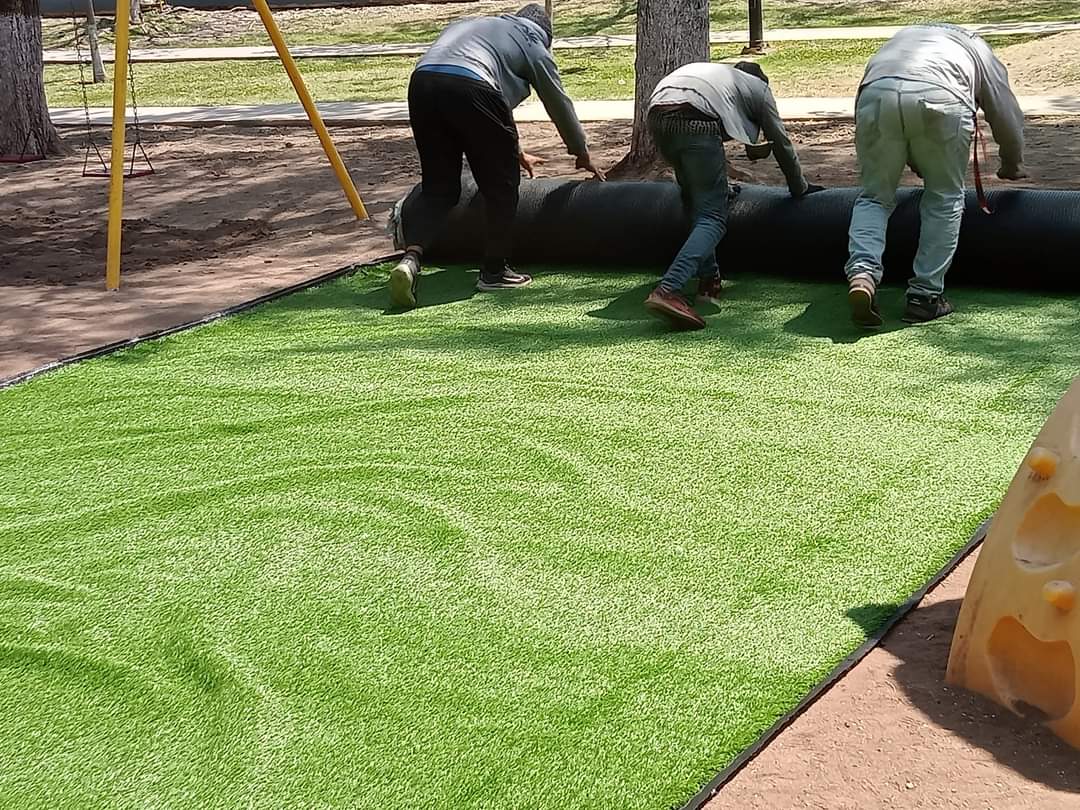
Installation of synthetic grass in the playground area of the Chapala boardwalk. Photo: Maximiano Macias Arceo
Last Thursday, April 7, the delegation staff were in charge of planting roses in the planters of the delegation and placing synthetic grass in the children’s playground area of the boardwalk.
Translated by Christalle Dalsted
Alistan nieves de garrafa para recibir a los turista
Jhonathan Chávez preparando un tejuino, una de las bebidas predilectas para los turistas durante la temporada. Foto: Héctor Ruiz.
Héctor Ruiz Mejía.- Tradicionales y artesanales nieves de garrafa, junto con el tejuino, se preparan para recibir a los turistas que pasarán la Semana Santa en Jocotepec.
Estos productos, que destacan por su frescura en la temporada de calor, son algunos de los más buscados por los visitantes, tanto en las cercanías de la plaza principal como en el malecón.
Las Nieves de Garrafa “Chávez”, atendido por Jhonatan y su padre, es uno de los puestos más solicitados por estar ubicado a un costado del templo del Señor de Monte, por la calle Miguel Arana, en el primer cuadro de la población.
Por más de 30 años esta familia ha perfeccionado la receta de la nieve de garrafa, ofertando más de 20 diferentes sabores de lunes a domingo de diez de la mañana a seis de la tarde.
En este puesto, los sabores más pedidos son: chongos zamoranos, zarzamora con Philadelphia, Ferrero Rocher, queso crema y pétalos de rosa, sin olvidar los tradicionales sabores como vainilla, chocolate, limón y coco.
“Antes de llegar aquí a Jocotepec, había escuchado de su tradicional nieve de garrafa, pero hasta que la probé, supe de qué hablaban, me encanta venir a la plaza por mi nieve de chongos zamoranos”, comentó Alice, quien lleva más de 20 años viviendo en el municipio.
Por último, el tejuino no se queda atrás, la deliciosa bebida elaborada a base de maíz fermentado, piloncillo y limón, es una experiencia imperdible, además de que contiene probióticos, microorganismos que ayudan al buen funcionamiento del sistema digestivo.
Según estimaciones de la dirección de Turismo y Fomento Artesanal de Jocotepec, se espera que durante la Semana Santa y de Pascua visiten el municipio cerca de 18 mil personas.
© 2016. Todos los derechos reservados. Semanario de la Ribera de Chapala
